Feeding your dog should be easy—pour food in the bowl, watch them devour it, repeat. But then reality kicks in.
“Am I feeding too much?” “Why is Buddy looking a little… round?” “Wait, did I already feed him? Why is he acting like he hasn’t eaten in days?”
I learned this the hard way with Charlie, my forever-hungry Labrador. He perfected the “puppy eyes of deception” so well that I nearly believed he had never been fed. Spoiler: He had. Twice.
If you’re wondering how much food your dog actually needs, you’re not alone. Let’s break it down so your pup stays healthy, happy, and at the perfect weight—without falling for their Oscar-worthy begging performance.
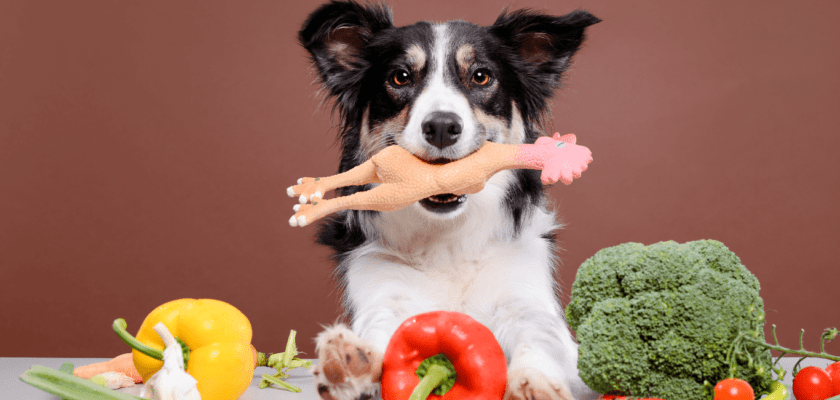
1. Age Matters: Puppies vs. Adults vs. Seniors 🐶
Dogs eat differently at every stage of life. Here’s what you need to know:
🐾 Puppies (0-12 months): The Furry Eating Machines
✔ Frequency: 3-4 small meals per day
✔ Why? Puppies grow rapidly and need more calories per pound than adults.
✔ Tip: Feed puppy-specific food—they need more protein and fat than adult dogs!
🐾 Adult Dogs (1-7 years): The Routine Eaters
✔ Frequency: 1-2 meals a day
✔ Why? Their metabolism stabilizes, so they need consistent portions to maintain a healthy weight.
✔ Tip: Stick to measured portions—overfeeding = weight gain!
🐾 Senior Dogs (7+ years): The Slow Burners
✔ Frequency: 2 smaller meals a day (easier on digestion)
✔ Why? Older dogs burn fewer calories and may develop joint issues or slower metabolism.
✔ Tip: Consider senior dog food for joint support & digestive ease.
2. The Science of Dog Calories: How Much Do They REALLY Need? 🔢
Every dog is different, but here’s a general guideline for daily caloric needs:
🐶 Small Breeds (up to 20 lbs) → 40 calories per pound
🐾 Medium Breeds (20-50 lbs) → 30 calories per pound
🐕 Large Breeds (50+ lbs) → 20-25 calories per pound
Quick Example:
- A 10-pound small dog needs ~400 calories per day
- A 50-pound moderately active dog needs ~1,200-1,500 calories per day
🔹 Reality Check:
✔ A cup of dry dog food = ~350-400 calories
✔ A can of wet food = ~250-350 calories
✔ Treats? Sneaky extra calories (limit to 10% of daily intake!)
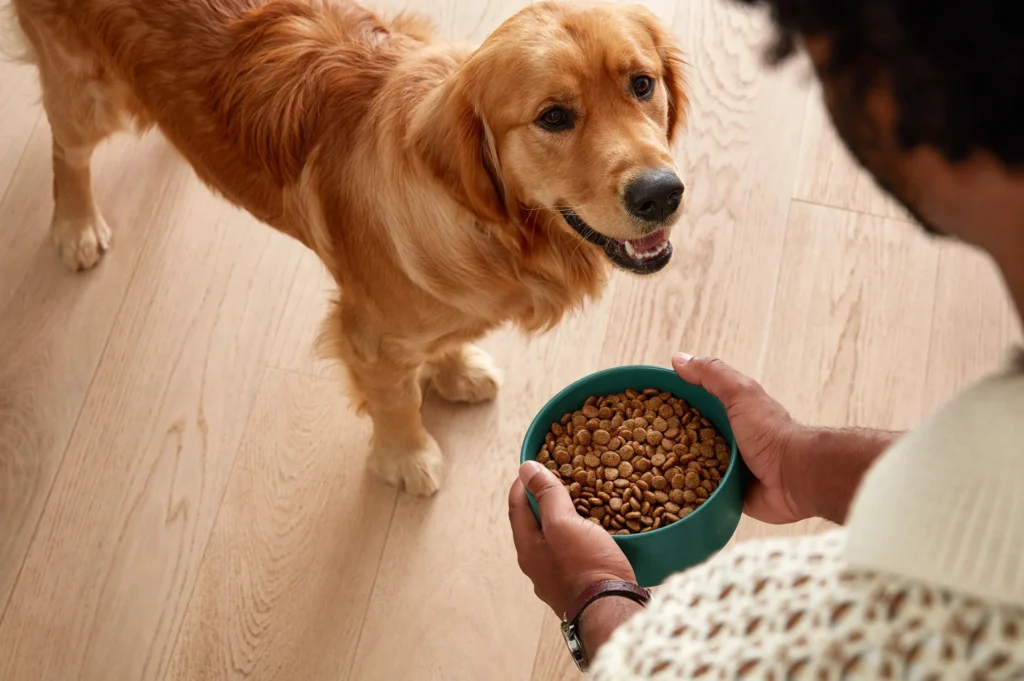
3. Dry vs. Wet Food: Which One (and How Much)? 🍽️
Both dry and wet food have their pros and cons—it depends on your dog’s needs.
🥩 Wet Food (Canned)
✔ Higher moisture = Great for hydration
✔ Easier to digest (good for picky eaters & seniors)
✔ Lower calorie density = Helps with portion control
🛑 But…
- More expensive
- Can’t be left out all day
📌 How Much?
Most adult dogs need 1 can per 20 lbs of body weight per day (split into two meals).
🥣 Dry Food (Kibble)
✔ Budget-friendly & convenient
✔ Higher calorie per bite (great for active dogs)
✔ Helps dental health when chewed
🛑 But…
- Easier to overfeed
- Lower moisture content (make sure they drink enough water!)
📌 How Much?
A 50-pound dog needs ~2 to 2.5 cups of dry food per day (split into two meals).
⚠️ Mixing Wet & Dry? Adjust portions accordingly! (e.g., 1 cup kibble + ½ can wet food).
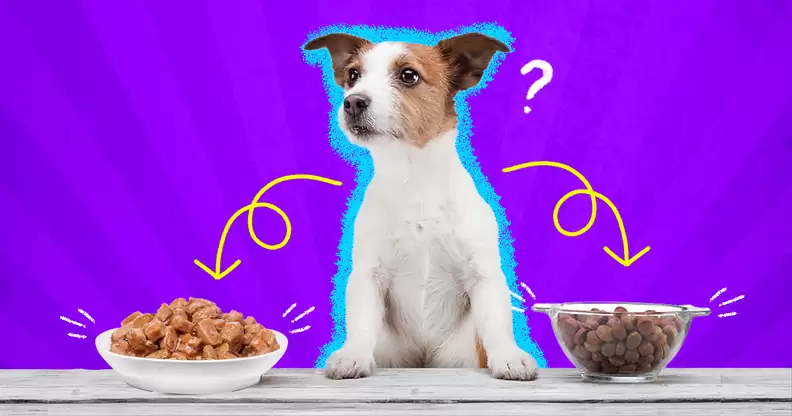
4. How to Tell If You’re Feeding the Right Amount 🤔
Following feeding charts is great, but watching your dog’s body condition is even better.
Signs of a Healthy Weight:
✔ You can feel their ribs but not see them
✔ They have a visible waist when viewed from above
✔ No excessive belly fat or sagging
🐾 Reality Check:
- If your dog is gaining weight → Reduce portions slightly
- If your dog is too thin → Increase portions & check for health issues
✅ Best Practice: Weigh your dog monthly to catch gradual changes!
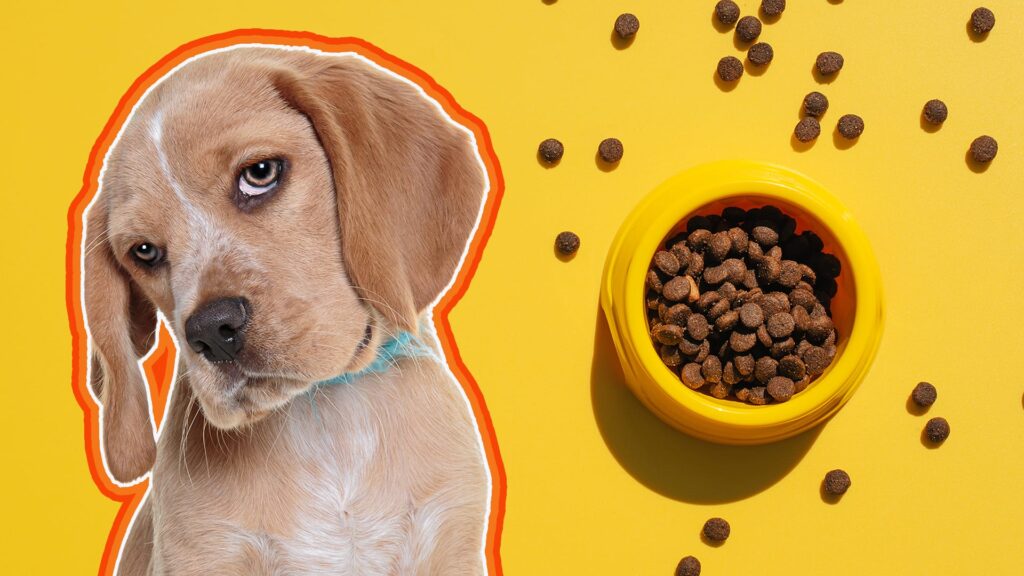
5. Common Feeding Mistakes (That Even the Best Owners Make!) 🚨
🔻 Overfeeding Due to “Begging”
Dogs act hungry even when they don’t need food. Stay strong. They’re expert manipulators.
🔻 Leaving Food Out All Day (Free-Feeding)
Works for some, but often leads to mindless eating & weight gain.
🔻 Not Adjusting for Age & Activity Level
Older or less active dogs need fewer calories. Adjust portions as they age!
🔻 Too Many Treats
Treats shouldn’t be more than 10% of daily intake. (Sorry, Charlie!)
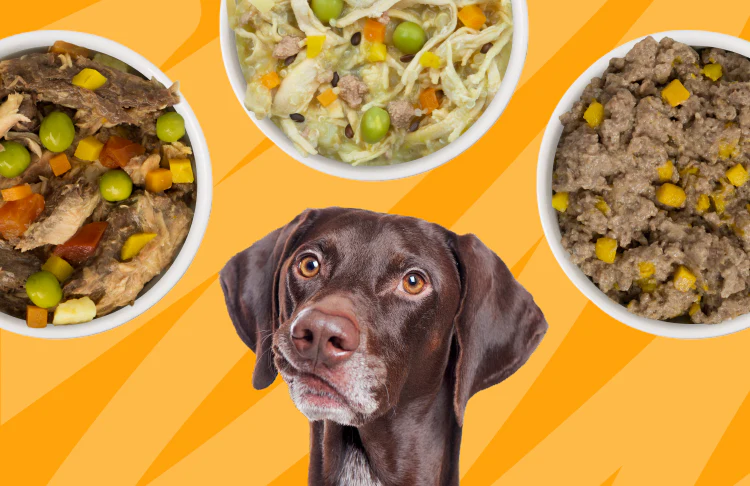
6. When to Call the Vet 📞
If your dog suddenly:
🚨 Refuses to eat for more than 24 hours
🚨 Loses or gains weight quickly
🚨 Has digestive issues (vomiting, diarrhea, constipation)
⚠️ These could be signs of an underlying medical issue. Don’t ignore it!
Final Thoughts: Feeding for a Long, Happy Life 🐾
Feeding your dog the right amount means:
✔ A healthy weight
✔ More energy & playfulness
✔ Fewer vet bills (because obesity leads to serious health issues!)
💡 Charlie’s Update: After sticking to proper portions & meal schedules, my food-obsessed Labrador finally reached his ideal weight! (Though he still acts like he’s starving every day).🔥 Your Turn: How do YOU determine your dog’s portion sizes? Any funny feeding stories? Drop them in the comments below! 🐶🍖